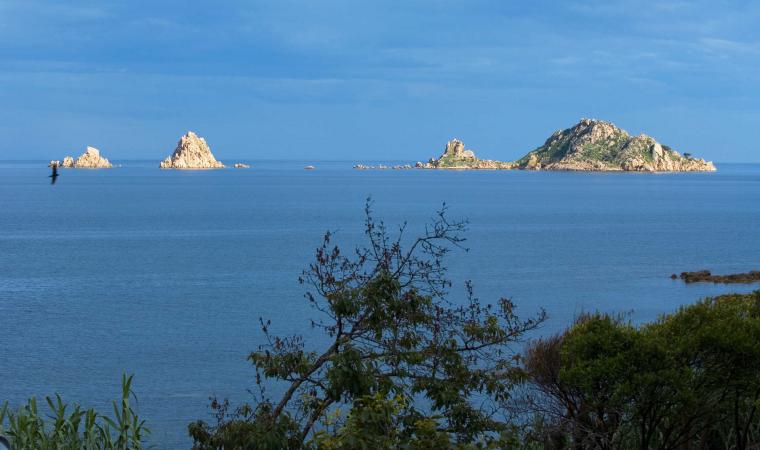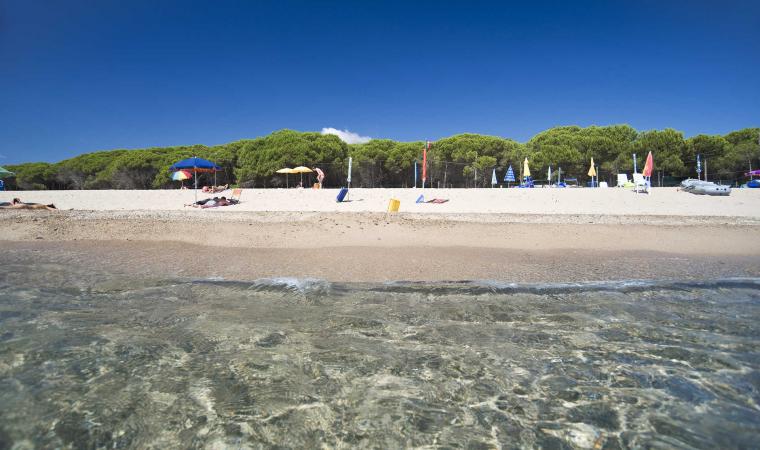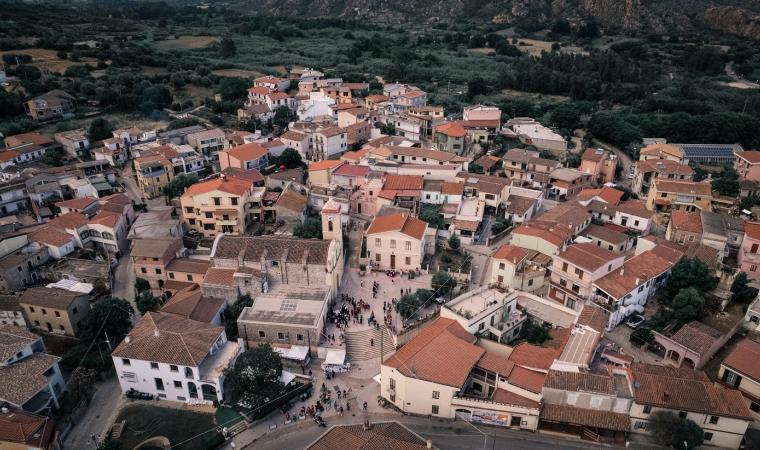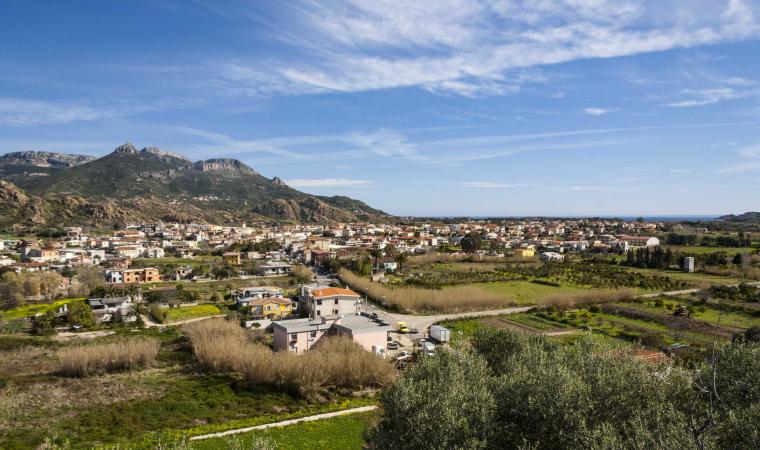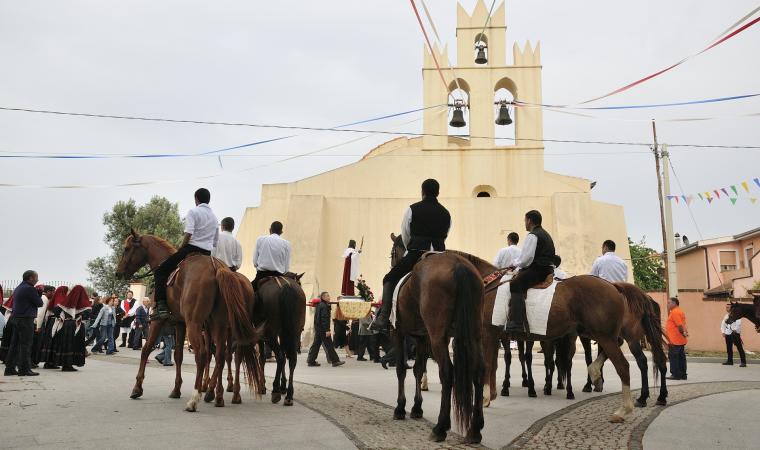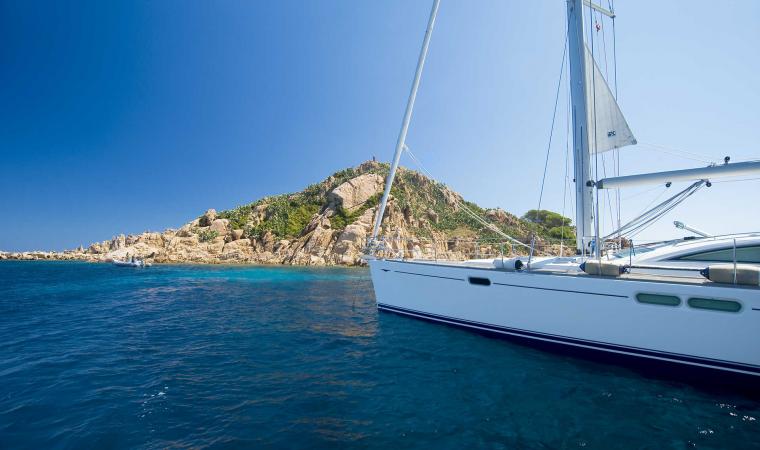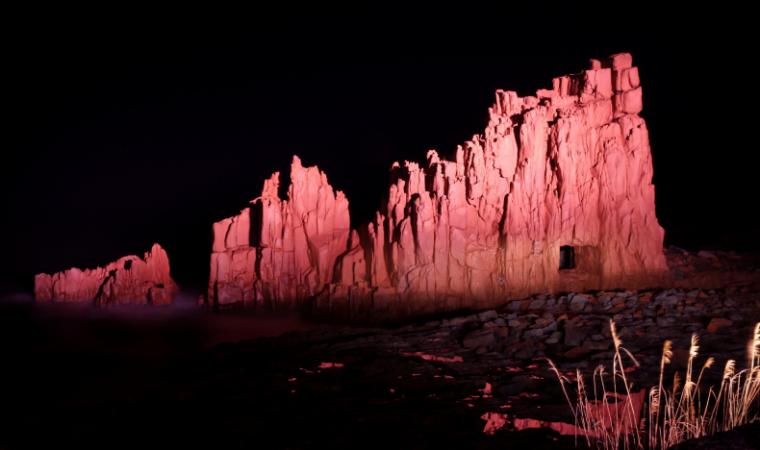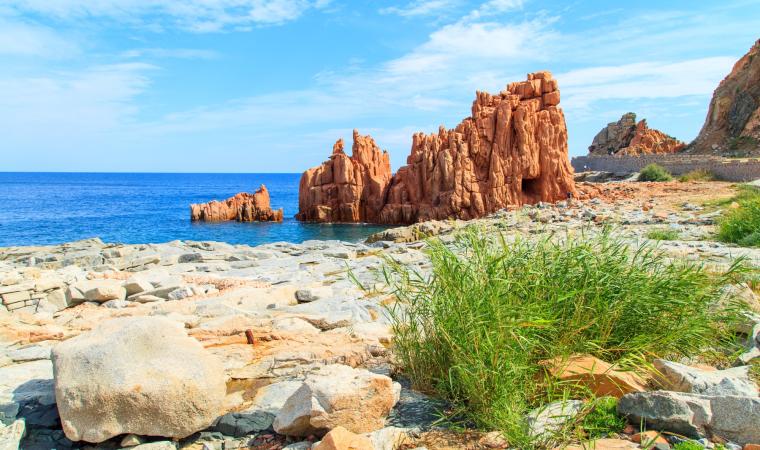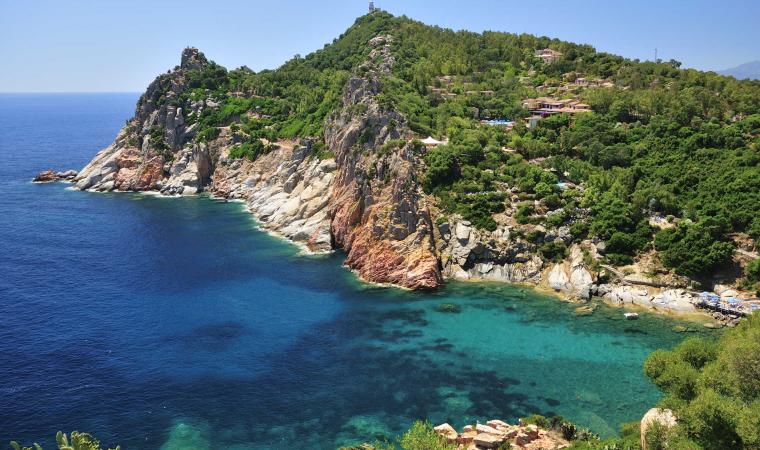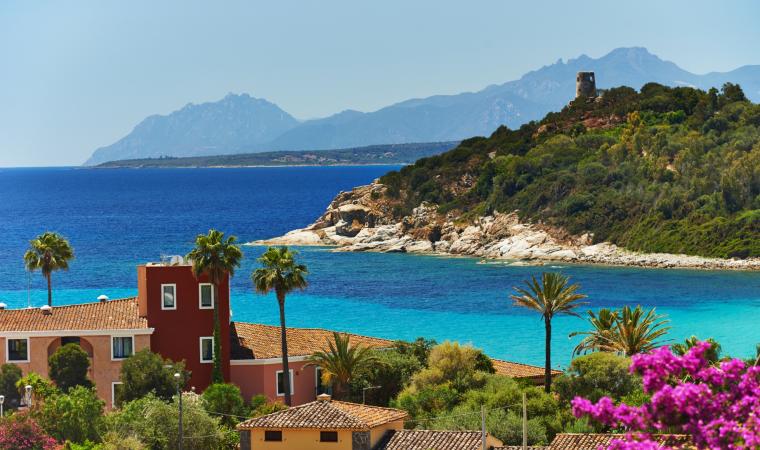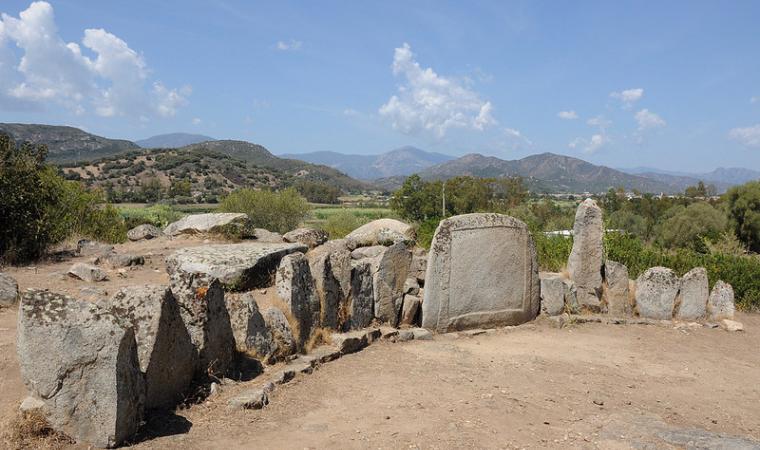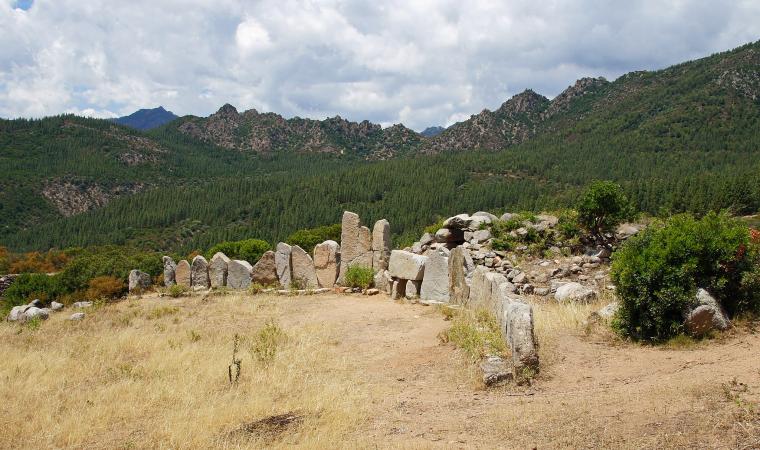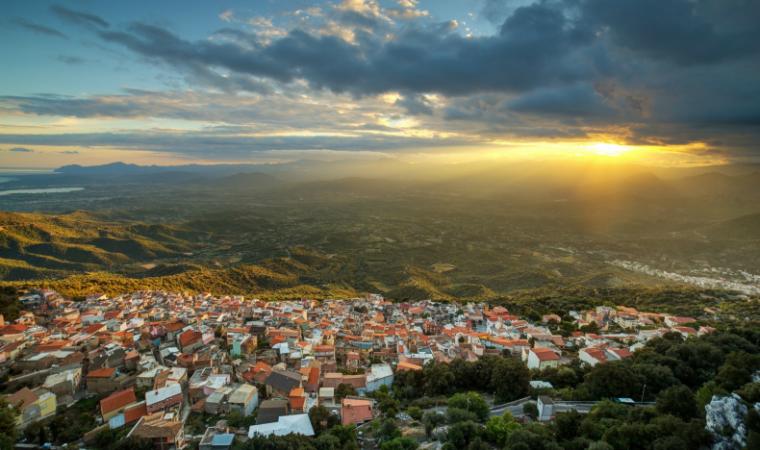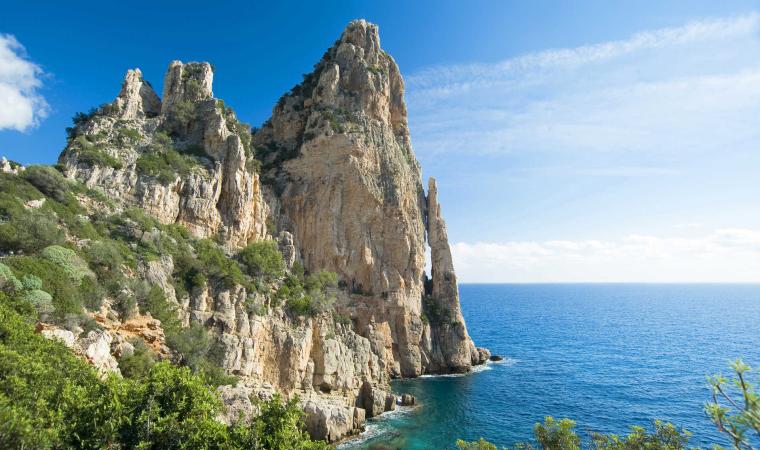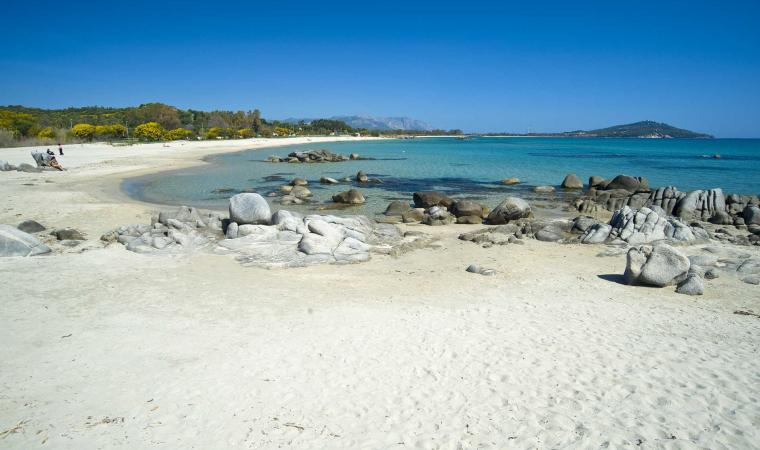Set between two rivers at the centre of a natural amphitheatre created by Monte Oro, Lotzorai is a farming town-tourist destination in the north-eastern part of Ogliastra and boasts more than 2,000 inhabitants. The town’s layout is typical of rural communities: large houses with spacious courtyards. The narrow streets of the old town centre crisscross over one another and offer some lovely settings. Around town are vegetable patches, olive groves, vineyards and orchards with citrus fruit, while along the seven kilometre long shoreline are hotels and restaurants frequented by sea and nature enthusiasts, by rock climbers, hikers and cyclists. The coastline starts at the little tourist resort of Tancau and leads to the peaches of Pollu, Lido delle Rose, Iscrixedda and Isula Manna.
Facing the town’s beach, about a mile east of the coast, is the little Island of Ogliastra. It is actually a small archipelago of three pink granite and red porphyry islands typical of the seascape here. The largest island is covered in vegetation and the habitat of cormorants, royal and Corsican seagulls. Once a haven for boats in bad weather, it is now a destination for pleasure craft. You can visit it in a canoe or reach it by peddle-boat when the sea is calm, or on boats that sail from Arbatax or Santa Maria Navarrese. At the top, some 50 metres high, stands a statue of the Madonna dell’Ogliastra, a work by sculptor Pinuccio Sciola, a favourite of the many faithful who, at the end of July, celebrate the feast of the Madonna of Peace with a procession of boats. Inland from the coast are marshlands and lagoons: the Pramaera River park, the Pollu and the Paùle di Iscrixedda pond right on the southern border between Lotzorai and Tortolì.
The village’s origins date to the Middle Ages and it belonged to the curatorio of Ogliastra, in the jurisdiction of Càlari. The castello della Medusa dates to that era. It sits on the top of a hill at the entrance to town, perhaps built in the XII century on the remains of a far older Phoenician-Punic construction. The origins of the fortress remain a mystery, but man’s presence in the area dates to prehistoric times, as proven by the necropolis with the about twenty stone domus de Janas di Funde ‘e Monti chambers (2700-1800 BCE) hewn into the rock. The many domus chambers cut into the granite at su Tancau-sa Murta, the pre-nuragic remains found in the su Padentinu woods and, above all, the Orzudeni nuraghe are all fascinating. The town’s most important church is in the old centre, the Parish Church of Sant’Elena, who is celebrated in late August.



